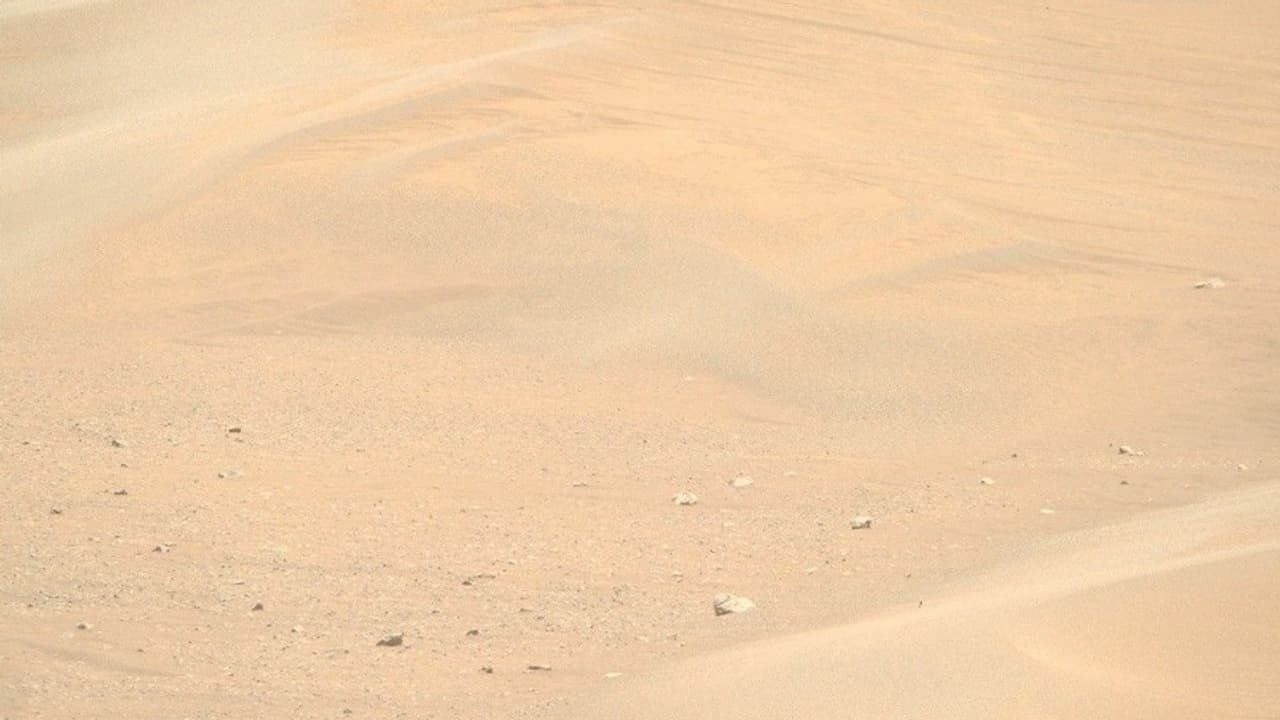NASA’s Perseverance rover has discovered strange frozen sand ripples on Mars. These megaripples reveal how wind still shapes the planet and could provide vital resources and insights to help future astronauts survive on the Red Planet.
Mars Ripples for Survival
NASA’s Perseverance rover is studying frozen sand ripples on Mars, revealing wind activity and resources that could help future astronauts survive.
On Earth, we often look to rocks and fossils to learn about the past. On Mars, however, the planet’s present is being written in sand. NASA’s Perseverance rover has been exploring unusual ripple-like formations in the Martian soil that could not only reveal how the Red Planet is still shaped by wind today, but also hold important clues for future human explorers.
Frozen Waves in the Sand
Perseverance recently investigated a region called Kerrlaguna, where it came across “megaripples” — large, frozen waves of sand that stand nearly a meter tall. Unlike the active sand dunes once studied by Curiosity rover, these ripples seem to have stopped moving long ago. Their surfaces are dusty and hardened, almost like sand dunes locked in time.
Scientists believe these structures formed when powerful Martian winds pushed sand grains into ridges, much like waves frozen in place. By studying their chemistry and makeup, researchers hope to understand how Mars’ atmosphere and winds continue to shape its surface even today.
More Than Just Science
While Perseverance often studies ancient rocks to uncover Mars’ distant past, this investigation is focused on the planet’s modern environment. Understanding these sandy ripples isn’t just about geology — it could also help us prepare for future human missions.
The rover’s tools — including cameras, laser instruments, and environmental sensors — are examining the size of the sand grains, their chemical composition, and whether salty crusts have formed on them. Such knowledge could be crucial for astronauts who may one day use Martian soil as a resource for survival.
Helmet-Shaped Rocks Spark Curiosity
During its travels, Perseverance also spotted unusual rocks shaped like helmets or witch hats, including one nicknamed “Horneflya.” These odd shapes likely formed as boulders tumbled down slopes, but they have fascinated both scientists and space enthusiasts online.
Why It Matters for the Future
Studying Martian sands may seem simple, but it provides practice for larger investigations in the future. Perseverance’s work at Kerrlaguna could prepare the team for a more detailed study at a bigger ripple field called Lac de Charmes further along its path.
And beyond Mars science, this research has real implications: the way wind, dust, and soil interact today could affect how astronauts travel, build shelters, or even extract resources on the Red Planet.
In the words of planetary scientists, while Mars’ past is carved in stone, its present is still being shaped in sand — and understanding it might be the key to our survival there someday.
